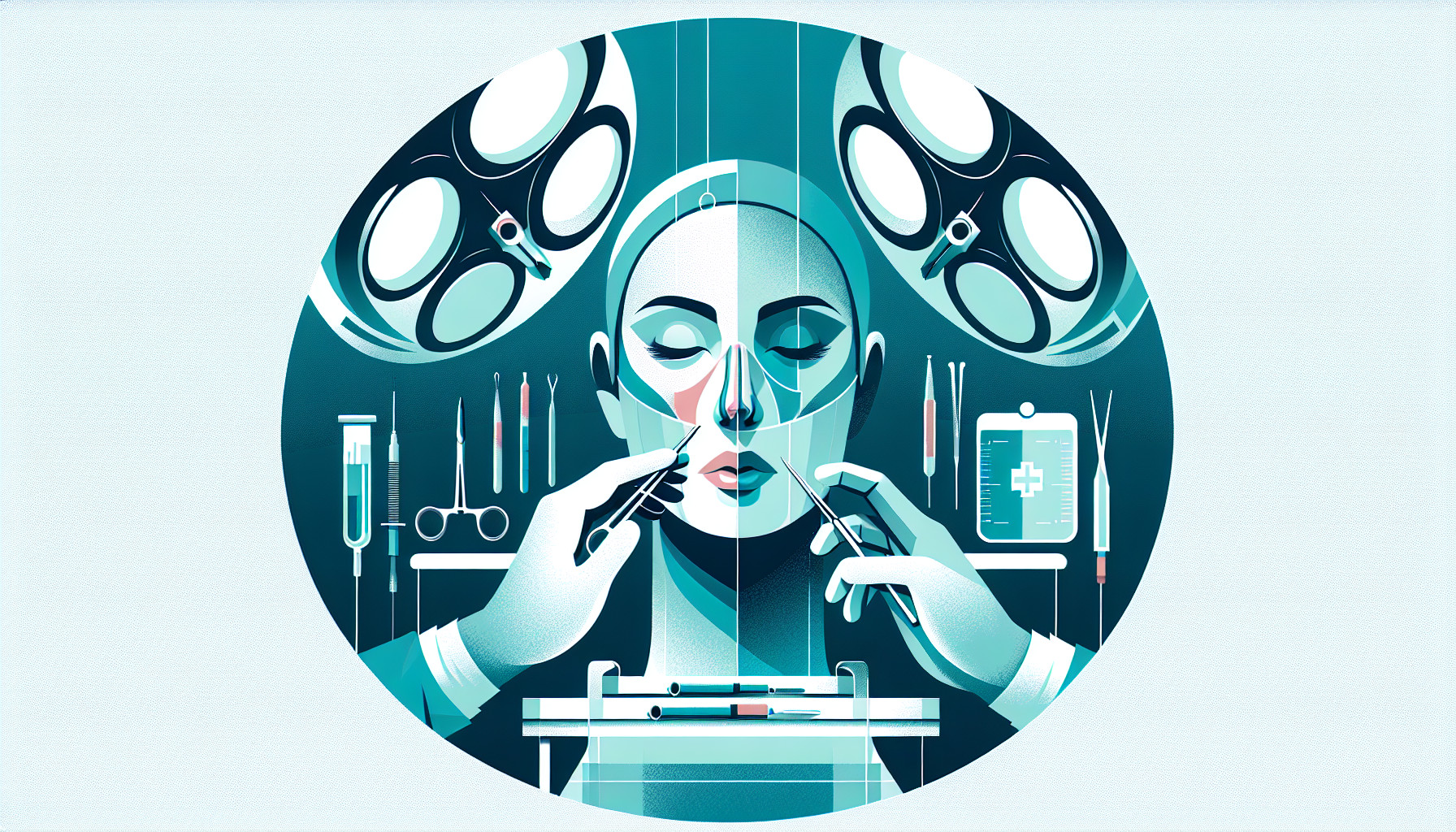Our Summary
This research paper is about the potential bad outcomes, or “adverse events,” that can happen after a nose job, also known as rhinoplasty. Currently, there isn’t a lot of information about the exact risk of these adverse events, which makes it hard for patients to fully understand the risks before they decide to have the surgery. This also means doctors can’t provide complete information to patients. The researchers carried out a detailed review of existing studies to try to estimate how often these adverse events occur.
They searched for relevant studies and ended up using 36 of them in their review. They found a range of adverse events reported, including the need for additional surgery, infection, wounds splitting open, bleeding, holes in the nasal septum (the wall between the nostrils), problems with breathing that required more surgery, and excessive scarring. The frequency of these events varied, with the need for additional surgery being the most common, reported in up to around 11% of cases.
The researchers concluded that this review is the first to provide a comprehensive look at the risks of adverse events following rhinoplasty. This information is important for doctors to be able to explain the risks to patients before surgery. The researchers recommend that future studies should be clear and consistent in how they report adverse events to make it easier to estimate the risks.
FAQs
- What are some potential adverse events that can occur after a rhinoplasty procedure?
- How common is the need for additional surgery after a rhinoplasty procedure?
- Why is it difficult for doctors to provide complete information about the risks of rhinoplasty to patients?
Doctor’s Tip
One helpful tip a doctor might tell a patient about rhinoplasty is to carefully follow all post-operative instructions provided by the surgeon. This includes taking any prescribed medications, attending follow-up appointments, and avoiding activities that could potentially impact the healing process. By following these instructions, patients can help reduce the risk of potential adverse events and ensure a successful outcome from the surgery.
Suitable For
Patients who are typically recommended rhinoplasty include those who are unhappy with the size or shape of their nose, have breathing problems due to a deviated septum, have suffered trauma to the nose, or have congenital abnormalities affecting the appearance or function of the nose. Additionally, patients who have realistic expectations about the outcome of the surgery and are in good overall health are good candidates for rhinoplasty. It is important for patients to have a thorough consultation with a board-certified plastic surgeon to discuss their goals, expectations, and any potential risks or complications associated with the procedure.
Timeline
Before rhinoplasty, a patient typically undergoes a consultation with a plastic surgeon to discuss their goals and expectations for the surgery. They may also undergo pre-operative testing to ensure they are healthy enough for the procedure.
During the rhinoplasty procedure, the surgeon makes incisions either inside the nostrils or across the base of the nose, reshapes the bone and cartilage to achieve the desired result, and then closes the incisions. The patient will then be monitored in a recovery room before being discharged home.
After rhinoplasty, the patient will experience swelling, bruising, and discomfort in the nose and surrounding areas. They will need to follow post-operative care instructions provided by their surgeon, which may include taking prescribed medications, avoiding certain activities, and attending follow-up appointments.
Over the weeks and months following rhinoplasty, the swelling will gradually go down, and the final results of the surgery will become more apparent. The patient may also undergo additional procedures, such as steroid injections or revision surgery, to address any issues that arise during the healing process.
Overall, the timeline for a patient before and after rhinoplasty includes consultation, surgery, recovery, and follow-up care to achieve the desired aesthetic and functional outcomes.
What to Ask Your Doctor
Some questions a patient should ask their doctor about rhinoplasty include:
- What are the potential risks and complications associated with rhinoplasty?
- How common are these adverse events in patients undergoing rhinoplasty?
- What steps can be taken to minimize the risk of complications during and after the surgery?
- How will you monitor my progress and recovery after the procedure?
- What is your experience and success rate with rhinoplasty surgeries?
- How will you address any concerns or complications that may arise during or after the surgery?
- Are there any specific factors in my case that may increase the risk of complications?
- Can you provide me with before and after photos of previous rhinoplasty patients to get an idea of the potential outcomes?
- What are the alternatives to rhinoplasty if I am concerned about the risks involved?
- How long is the recovery period and what can I expect in terms of pain and discomfort following the surgery?
By asking these questions, patients can have a better understanding of the risks and potential outcomes associated with rhinoplasty surgery, allowing them to make a more informed decision about whether to proceed with the procedure.
Reference
Authors: Sharif-Askary B, Carlson AR, Van Noord MG, Marcus JR. Journal: Plast Reconstr Surg. 2020 Mar;145(3):669-684. doi: 10.1097/PRS.0000000000006561. PMID: 32097305
